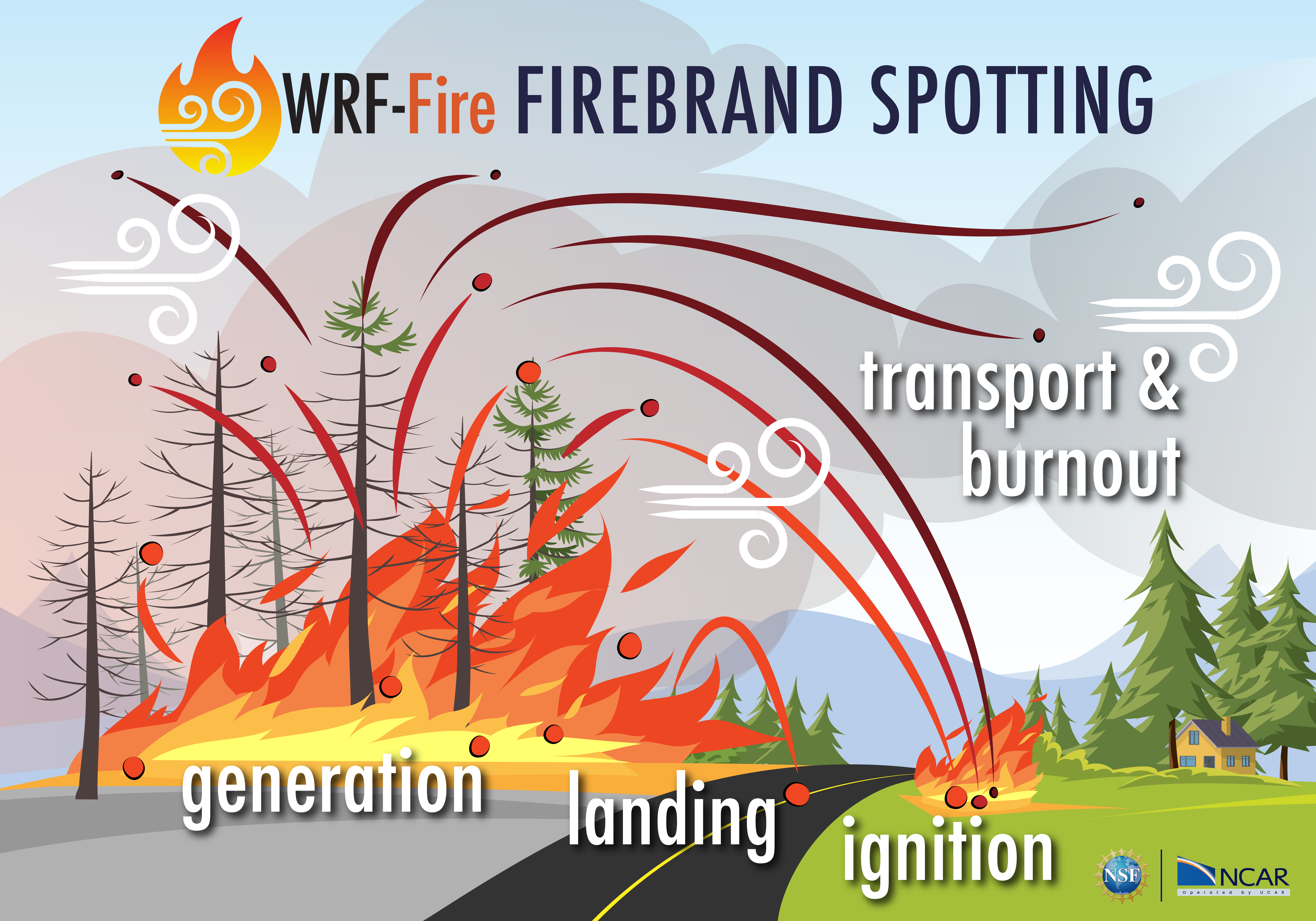RAL SEMINAR: Modeling Firebrand Spotting in WRF-Fire for Coupled Fire-Weather Prediction
1:00 – 2:00 pm MDT
Our WRF-Fire model can simulate thousands of individual embers and predict the locations where spotting is more likely
NSF NCAR RAL
Fire spotting can be a dominant fire spread mechanism in wind-driven events, particularly those that occur in the wildland-urban interface (WUI), such as the Marshall Fire. To simulate these fires, the model’s ability to spot is critical, in that it accelerates the rate of spread and enables the fire to spread over streams and urban features such as highways. The firebrand spotting parameterization was implemented in WRF-Fire V4.4 to improve simulations of wind-driven fires in a fire-atmosphere coupled system. In the parameterization, particles are generated from locations aligned with the fire front, firebrands are then transported using a Lagrangian framework, and fire spots may occur when firebrands land on unburned grid points.
In 2023, the RAL Opportunity Fund granted an award which allowed us to conclude a significant step in this work that was to implement automated spot fire ignitions in the model. In this seminar, I will present the application of this work to a case study of the Marshall Fire (Colorado, 2021). Our verification metrics show that when fire spots were included in the simulations, fire rate of spread and burn area consistently improved, resulting impacts of the CPR on cloud and precipitation development over the UAE during summertime is presented and discussed.

Maria Frediani
Resources
- Presentation Announcement: RAL SEMINAR: Modeling Firebrand Spotting in WRF-Fire for Coupled Fire-Weather Prediction (981.36 KB)
- NSF NCAR RAL - Modeling Firebrand Spotting in WRF-Fire for Coupled Fire-Weather Prediction
- The role of fire spotting in fire-weather prediction
- Fighting Fire with a Firebrand Model: NCAR scientist is developing new modeling capability to predict spot fires